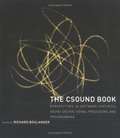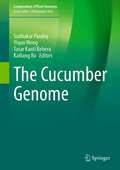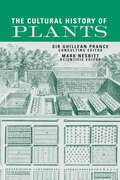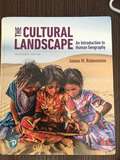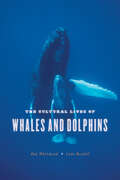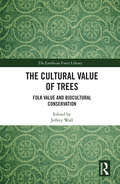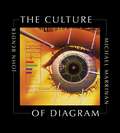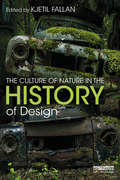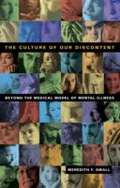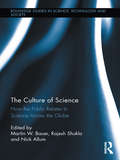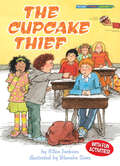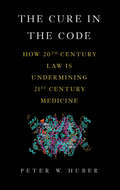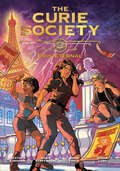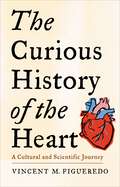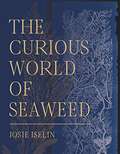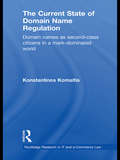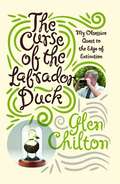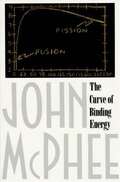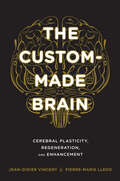- Table View
- List View
The Csound Book: Perspectives in Software Synthesis, Sound Design, Signal Processing and Programming
by Richard BoulangerWritten by the world's leading educators, programmers, sound designers, and composers, this comprehensive guide covers both the basics of Csound and the theoretical and musical concepts necessary to use the program effectively.
The Cucumber Genome (Compendium of Plant Genomes)
by Tusar Kanti Behera Sudhakar Pandey Yiqun Weng Kailiang BoThis edited book presents the latest research on cucumber, its genetic resources and diversity, tissue culture and genetic transformation, mapping of economic genes and QTLs, whole genome sequencing, comparative genomics, and breeding strategies. The mechanism of sex expression, interspecific hybridization, and cell biology are also described. The book discusses the genome draft of cucumber and the application of genome editing. This book is useful to the students, teachers and scientists in academia and relevant private companies interested in horticulture, genetics, breeding, and related areas.
The Cultural History of Plants
by Mark Nesbitt Ghillean PranceThis valuable reference will be useful for both scholars and general readers. It is both botanical and cultural, describing the role of plant in social life, regional customs, the arts, natural and covers all aspects of plant cultivation and migration and covers all aspects of plant cultivation and migration. The text includes an explanation of plant names and a list of general references on the history of useful plants.
The Cultural Landscape: An Introduction to Human Geography
by James M. RubensteinThe Cultural Landscape: An Introduction to Human Geography uses a structured learning path to look into the patterns and processes of Earth's human landscapes. Rubenstein explores the relationships between people and their locations, looking at where people and activities are located across Earth's surface and understanding why they are located in particular places.
The Cultural Lives of Whales and Dolphins
by Hal Whitehead Luke RendellIn the songs and bubble feeding of humpback whales; in young killer whales learning to knock a seal from an ice floe in the same way their mother does; and in the use of sea sponges by the dolphins of Shark Bay, Australia, to protect their beaks while foraging for fish, we find clear examples of the transmission of information among cetaceans. Just as human cultures pass on languages and turns of phrase, tastes in food (and in how it is acquired), and modes of dress, could whales and dolphins have developed a culture of their very own? Unequivocally: yes. In The Cultural Lives of Whales and Dolphins, cetacean biologists Hal Whitehead, who has spent much of his life on the ocean trying to understand whales, and Luke Rendell, whose research focuses on the evolution of social learning, open an astounding porthole onto the fascinating culture beneath the waves. As Whitehead and Rendell show, cetacean culture and its transmission are shaped by a blend of adaptations, innate sociality, and the unique environment in which whales and dolphins live: a watery world in which a hundred-and-fifty-ton blue whale can move with utter grace, and where the vertical expanse is as vital, and almost as vast, as the horizontal. Drawing on their own research as well as a scientific literature as immense as the sea--including evolutionary biology, animal behavior, ecology, anthropology, psychology, and neuroscience--Whitehead and Rendell dive into realms both humbling and enlightening as they seek to define what cetacean culture is, why it exists, and what it means for the future of whales and dolphins. And, ultimately, what it means for our future, as well.
The Cultural Origins of Human Cognition
by Michael TomaselloAmbitious and elegant, this book builds a bridge between evolutionary theory and cultural psychology. Michael Tomasello is one of the very few people to have done systematic research on the cognitive capacities of both nonhuman primates and human children. The Cultural Origins of Human Cognition identifies what the differences are, and suggests where they might have come from. Tomasello argues that the roots of the human capacity for symbol-based culture, and the kind of psychological development that takes place within it, are based in a cluster of uniquely human cognitive capacities that emerge early in human ontogeny. These include capacities for sharing attention with other persons; for understanding that others have intentions of their own; and for imitating, not just what someone else does, but what someone else has intended to do. In his discussions of language, symbolic representation, and cognitive development, Tomasello describes with authority and ingenuity the "ratchet effect" of these capacities working over evolutionary and historical time to create the kind of cultural artifacts and settings within which each new generation of children develops. He also proposes a novel hypothesis, based on processes of social cognition and cultural evolution, about what makes the cognitive representations of humans different from those of other primates. Lucid, erudite, and passionate, The Cultural Origins of Human Cognition will be essential reading for developmental psychology, animal behavior, and cultural psychology.
The Cultural Value of Trees: Folk Value and Biocultural Conservation (The Earthscan Forest Library)
by Jeffrey WallThis volume focuses on the tree, as a cultural and biological form, and examines the concept of folk value and its implications for biocultural conservation. Folk value refers to the value of the more-than-human living world to cultural cohesion and survival, as opposed to individual well-being. This field of value, comprising cosmological, aesthetic, eco-erotic, sentimental, mnemonic value and much more, serves as powerful motivation for the local performance of environmental care. The motivation to maintain and conserve ecology for the purpose of cultural survival will be the central focus of this book, as the conditions of the Anthropocene urgently require the identification, understanding and support of enduring, self-perpetuating biocultural associations. The geographical scope is broad with chapters discussing different tree species from the Americas and the Caribbean, East Asia, Eurasia and Australia and Africa. By focusing on the tree, one of the most reliably cross-culturally-valued and cross-culturally-recognized biological forms, and one which invariably defines expansive landscapes, this work illuminates how folk value binds the survival of more-than-human life forms with the survival of specific peoples in the era of biocultural loss, the Anthropocene. As such, this collection of cross-cultural cases of tree folk value represents a low hanging fruit for the larger project of exploring the power of cultural value of the more-than-human living world. This book will be of great interest to students and scholars of conservation, biodiversity, biocultural studies and environmental anthropology.
The Culture of Diagram
by John Bender Michael MarrinanThe diagram, write Bender (interdisciplinary studies, Stanford U.) and Marrinan (art history, Stanford U.), "is a proliferation of manifestly selective packets of dissimilar data correlated in an explicitly process-oriented array that has some of the attributes of a representation but is situated in the world like an object." They present here an "archaeology of the diagram" that centers on this understanding of diagram as process. Their discussion ranges across 250 years, from the diagrams of Diderot's Encylopédie to diagrammatic forms of representation in quantum mechanics, and across multiple fields of human endeavor, including mathematics, art, and medicine. Annotation ©2010 Book News, Inc., Portland, OR (booknews.com)
The Culture of Feedback: Ecological Thinking in Seventies America
by Daniel BelgradWhen we want advice from others, we often casually speak of “getting some feedback.” But how many of us give a thought to what this phrase means? The idea of feedback actually dates to World War II, when the term was developed to describe the dynamics of self-regulating systems, which correct their actions by feeding their effects back into themselves. By the early 1970s, feedback had become the governing trope for a counterculture that was reoriented and reinvigorated by ecological thinking. The Culture of Feedback digs deep into a dazzling variety of left-of-center experiences and attitudes from this misunderstood period, bringing us a new look at the wild side of the 1970s. Belgrad shows us how ideas from systems theory were taken up by the counterculture and the environmental movement, eventually influencing a wide range of beliefs and behaviors, particularly related to the question of what is and is not intelligence. He tells the story of a generation of Americans who were struck by a newfound interest in—and respect for—plants, animals, indigenous populations, and the very sounds around them, threading his tapestry with cogent insights on environmentalism, feminism, systems theory, and psychedelics. The Culture of Feedback repaints the familiar image of the ’70s as a time of Me Generation malaise to reveal an era of revolutionary and hopeful social currents, driven by desires to radically improve—and feed back into—the systems that had come before.
The Culture of Nature in the History of Design
by Kjetil FallanThe Culture of Nature in the History of Design confronts the dilemma caused by design’s pertinent yet precarious position in environmental discourse through interdisciplinary conversations about the design of nature and the nature of design. Demonstrating that the deep entanglements of design and nature have a deeper and broader history than contemporary discourse on sustainable design and ecological design might imply, this book presents case studies ranging from the eighteenth to the twenty-first century and from Singapore to Mexico. It gathers scholarship on a broad range of fields/practices, from urban planning, landscape architecture, and architecture, to engineering design, industrial design, furniture design and graphic design. From adobe architecture to the atomic bomb, from the bonsai tree to Biosphere 2, from pesticides to photovoltaics, from rust to recycling – the culture of nature permeates the history of design. As an activity and a profession always operating in the borderlands between human and non-human environments, design has always been part of the environmental problem, whilst also being an indispensable part of the solution. The book ventures into domains as diverse as design theory, research, pedagogy, politics, activism, organizations, exhibitions, and fiction and trade literature to explore how design is constantly making and unmaking the environment and, conversely, how the environment is both making and unmaking design. This book will be of great interest to a range of scholarly fields, from design education and design history to environmental policy and environmental history.
The Culture of Our Discontent
by Meredith F. SmallBy many estimations, the Western medical model of mental health is dangerously incomplete. If we step outside of the traditional disease model there are many new and different ways to understand, treat, and even accept mental illness. Culture--how we collectively live, interact, and view the world--frames our mental outlook. Arguably, culture even creates it. Western culture, for example, has completely embraced the medical model of mental illness. We quickly turn to physicians if we are unhappy or otherwise mentally discomfited, seeking solutions on a prescription pad. We expect brain chemistry to be at the root of any mental malady, forgetting the deeply entwined relationship between the biology of the brain and the environment in which we think, feel, and react. But every culture has a different view of the world, a lens through which normal or insane are viewed and defined. Anthropologist Meredith Small contends there is much to be learned from stepping away from the traditional Western medical model to explore and embrace alternative perspectives. By examining culture itself, rather than focusing on biology and medicine, we can fully understand the nature of our discontent. Looking at social, evolutionary, cross-cultural, and nutritional influences, Small deconstructs mental illnesses like depression and anxiety conditions that appear in different forms and for different reasons within the culture that defines them. By rethinking assumptions and questioning standard treatment programs, she helps us gradually relax our grip on the medical model to discover a new perspective on mental illness.
The Culture of Science: How the Public Relates to Science Across the Globe (Routledge Studies in Science, Technology and Society)
by Rajesh Shukla Martin W. Bauer Nick AllumThis book offers the first comparative account of the changes and stabilities of public perceptions of science within the US, France, China, Japan, and across Europe over the past few decades. The contributors address the influence of cultural factors; the question of science and religion and its influence on particular developments (e.g. stem cell research); and the demarcation of science from non-science as well as issues including the ‘incommensurability’ versus ‘cognitive polyphasia’ and the cognitive (in)tolerance of different systems of knowledge.
The Cupcake Thief: Justice System (Social Studies Connects)
by Ellen JacksonThe popular Social Studies Connects series links history, geography, civics and economics to kids&’ daily lives. Featuring stories with diverse characters who face situations young readers can relate to, these books support reading and social studies skills including researching, inferring, comparing, and communication. An activity to stimulate curiosity about the world is included in each book!Zack's cupcake went missing, and someone ate the evidence. Is Tyler innocent--or guilty? Only the Student Court can decide! (Social Studies Topic: Civics/Justice System)
The Cure in the Code: How 20th Century Law is Undermining 21st Century Medicine
by Peter W. HuberNever before have two revolutions with so much potential to save and prolong human life occurred simultaneously. The converging, synergistic power of the biochemical and digital revolutions now allows us to read every letter of life's code, create precisely targeted drugs to control it, and tailor their use to individual patients. Cancer, diabetes, Alzheimer's and countless other killers can be vanquished-if we make full use of the tools of modern drug design and allow doctors the use of modern data gathering and analytical tools when prescribing drugs to their patients.But Washington stands in the way, clinging to outdated drug-approval protocols developed decades ago during medicine's long battle with the infectious epidemics of the past. Peter Huber, an expert in science, technology, and public policy, demonstrates why Washington's one-size-fits-all drug policies can't deal with diseases rooted in the complex molecular diversity of human bodies. Washington is ill-equipped to handle the torrents of data that now propel the advance of molecular medicine and is reluctant to embrace the statistical methods of the digital age that can. Obsolete economic policies, often rationalized as cost-saving measures, stifle innovation and suppress investment in the medicine that can provide the best cures at the lowest cost.In the 1980s, an AIDS diagnosis was a death sentence, until the FDA loosened its throttling grip and began streamlining and accelerating approval of life-saving drugs. The Cure in the Code shows patients, doctors, investors, and policy makers what we must now do to capture the full life-saving and cost-saving potential of the revolution in molecular medicine. America has to choose. At stake for America is the power to lead the world in mastering the most free, fecund, competitive, dynamic, and intelligent natural resource on the planet-the molecular code that spawns human life and controls our health.
The Curie Society (The Curie Society Series #1)
by Heather Einhorn Adam Staffaroni Janet HarveyA covert team of young women—members of the Curie society, an elite organization dedicated to women in STEM—undertake high-stakes missions to save the world. <p><p>An action-adventure original graphic novel, The Curie Society follows a team of young women recruited by an elite secret society—originally founded by Marie Curie—with the mission of supporting the most brilliant female scientists in the world. The heroines of the Curie Society use their smarts, gumption, and cutting-edge technology to protect the world from rogue scientists with nefarious plans. <p><p>Readers can follow recruits Simone, Taj, and Maya as they decipher secret codes, clone extinct animals, develop autonomous robots, and go on high-stakes missions. <P><P><i>Advisory: Bookshare has learned that this book offers only partial accessibility. We have kept it in the collection because it is useful for some of our members. Benetech is actively working on projects to improve accessibility issues such as these.</i>
The Curie Society: Eris Eternal (The Curie Society Series #2)
by Anne Toole Heather Einhorn Adam StaffaroniThe plucky young scientist heroes of The Curie Society go toe-to-toe with a powerful and sinister threat in a globe-spanning scientific adventure on the cutting edge of advanced biotech.Our heroic teen science prodigies are back for a new mission with the Curie Society, an elite secret organization where brilliant women can pursue the furthest reaches of their intellect, and this time they face a threat more serious and more sinister than anything they&’ve encountered before!Maya, Taj, and Simone are supposed to be spending their summer broadening their horizons, but their plans take a strange and puzzling turn when the Curie Society&’s original chapter, at the Sorbonne in Paris, calls on them for help. Daksha, a Society alumna, is promoting cutting-edge science and technology startups at a showcase event, but someone has threatened to stop her and the proceedings. When Daksha is poisoned, the team swings into action to investigate.Along with new friends from the Paris chapter of the Curie Society, the team is thrown into a globe-spanning quest and a dangerous game of cat and mouse with a shadowy villain intent on controlling the world&’s wealth through advanced biotech. The Curie Society will need all their specialized science skills to stop this scheme before it&’s too late!
The Curious Case of Usable Privacy: Challenges, Solutions, and Prospects (Synthesis Lectures on Information Security, Privacy, and Trust)
by Simone Fischer-Hübner Farzaneh KaregarThis book journeys through the labyrinth of usable privacy, a place where the interplay of privacy and Human-Computer Interaction (HCI) reveals a myriad of challenges, solutions, and new possibilities. Establishing a solid understanding of usable privacy research, practices, and challenges, the book illuminates for readers the often shadowy corridors of such a multifaceted domain and offers guidelines and solutions to successfully traverse the challenging maze. The book does not simply focus on data protection or legislative frameworks but also on what it takes for privacy to be safeguarded, understood, embraced, and easily practiced by all. It begins with a thorough exploration of the background of privacy tools and technologies, the evolution of privacy rules and regulations, and the backdrop upon which this narrative unfolds. After establishing this context, its next important focus is the current state and future directions of the field, including thefrontiers of usable privacy research in relation to the Internet of Things (IoT), usability of PETs, and usable privacy for UX and software developers. The book also considers the often-overlooked privacy narratives of marginalized communities and delves into the complexities of user-centric privacy. Readers are provided with a blueprint for addressing these hurdles and establishing pathways for a more privacy-conscious world. The text will be of interest to students studying Computer Science, Information Systems, or Law, as well as researchers and practitioners working in the fields of usable privacy, privacy by design, Privacy-Enhancing Technologies (PETs), or HCI. All will benefit from the book’s central deliberation of a question that echoes through time and technological advancements: why does usable privacy matter?
The Curious History of the Heart: A Cultural and Scientific Journey
by Vincent M. FigueredoFor much of recorded history, people considered the heart to be the most important organ in the body. In cultures around the world, the heart—not the brain—was believed to be the location of intelligence, memory, emotion, and the soul. Over time, views on the purpose of the heart have transformed as people sought to understand the life forces it contains. Modern medicine and science dismissed what was once the king of the organs as a mere blood pump subservient to the brain, yet the heart remains a potent symbol of love and health and an important part of our cultural iconography.This book traces the evolution of our understanding of the heart from the dawn of civilization to the present. Vincent M. Figueredo—an accomplished cardiologist and expert on the history of the human heart—explores the role and significance of the heart in art, culture, religion, philosophy, and science across time and place. He examines how the heart really works, its many meanings in our emotional and daily lives, and what cutting-edge science is teaching us about this remarkable organ. Figueredo considers the science of heart disease, recent advancements in heart therapies, and what the future may hold. He highlights the emerging field of neurocardiology, which has found evidence of a “heart-brain connection” in mental and physical health, suggesting that ancient views hold more truth than moderns suspect.Ranging widely and deeply throughout human history, this book sheds new light on why the heart remains so central to our sense of self.
The Curious Human Knee
by Han YuWhere would we be without the knee? This down-to-earth joint connecting the thigh and the lower leg doesn’t receive the attention it deserves. Yet, as The Curious Human Knee reveals, it is crucial to countless facets of science, medicine, culture, and history—and even what makes us human.The science writer Han Yu provides an informative, surprising, and entertaining exploration of the human knee across time and place. She begins with our earliest ancestors, emphasizing that walking upright separates us from the apes and bipedal knees appeared long before big brains and sophisticated tools. Yu considers the intricate anatomy of the knee, its evolutionary history, and the complexity of treating knee pain, including her own. She examines why women’s knees might be more prone to damage than men’s and addresses the roles of race and class in ailments such as osteoarthritis. This book gets knee-deep into an astonishing range of topics—fashion from flappers to miniskirts and ripped jeans, cultural practices spanning Japanese knee walking and Thai boxing, and more. Yu reflects on the symbolic power of kneeling from the imperial court in China to the football field in the United States and shows why the knee figures into so many social and political phenomena.Distilling a vast amount of research in a style that is engaging, conversational, and even personal and witty, this book opens readers’ eyes to the complexity and significance of the humble knee.
The Curious World of Seaweed: Stories from the Pacific Coast
by Josie IselinMarine algae are the supreme eco-engineers of life: they oxygenate the waters, create habitat for countless other organisms, and form the base of a food chain that keeps our planet unique in the universe as we know it. In this beautiful volume Josie Iselin explores both the artistic and the biological presence of sixteen seaweeds and kelps that live in the thin region where the Pacific Ocean converges with the North American continent—a place of incomparable richness. Each species receives a detailed description of its structure, ecological importance, and humans’ scientific inquiry into it, told in scientifically illuminating yet deeply reverent and inspired prose. Throughout the writings are historical botanical illustrations and Iselin’s signature, Marimekko-like portraits of each specimen that reveal their vibrant colors—whether rosy, “olivaceous,” or grass-green—and whimsical shapes. Iselin posits that we can learn not only about the seaweeds but also from them: their resilience, their resourcefulness, their poetry and magic.
The Current State of Domain Name Regulation: Domain Names as Second Class Citizens in a Mark-Dominated World (Routledge Research in Information Technology and E-Commerce Law)
by Konstantinos KomaitisIn this book Konstantinos Komaitis identifies a tripartite problem – intellectual, institutional and ethical – inherent in the domain name regulation culture. Using the theory of property, Komaitis discusses domain names as sui generis ‘e-property’ rights and analyses the experience of the past ten years, through the Uniform Domain Name Dispute Resolution Policy (UDRP) and the Anticybersquatting Consumer Protection Act (ACPA). The institutional deficit he identifies, generates a further discussion on the ethical dimensions in the regulation of domain names and prompts Komaitis to suggest the creation of an environment based on justice. The relationship between trademarks and domain names has always been contentious and the existing institutions of the UDRP and ACPA have not assisted in alleviating the tension between the two identifiers. Over the past ten years, the trademark community has been systematic in encouraging and promoting a culture that indiscriminately considers domain names as secondclass citizens, suggesting that trademark rights should have priority over the registration in the domain name space. Komaitis disputes this assertion and brings to light the injustices and the trademark-oriented nature of the UDRP and ACPA. He queries what the appropriate legal source to protect registrants when not seeking to promote trademark interests is. He also delineates a legal hypothesis on their nature as well as the steps of their institutionalisation process that we need to reverse, seeking to create a just framework for the regulation of domain names. Finally he explores how the current policies contribute to the philosophy of domain names as second-class citizens. With these questions in mind, Komaitis suggests some recommendations concerning the reconfiguration of the regulation of domain names.
The Curse of the Labrador Duck
by Glen ChiltonIn an obsessive 82,000-mile quest for dead birds, how much trouble can one scientist get into? Finally, the world's leading authority on the extinct Labrador Duck, Dr. Glen Chilton, shares the story of his frenzied obsession to reveal the histories behind the mysterious bird -- a saga wherein he sets out to examine the remains of every Labrador Duck, conduct genetic analysis on every Labrador Duck egg, and visit every site where the duck was shot...with many a (mis)adventure along the way. More elusive than the Passenger Pigeon, the Dodo, or the Great Auk and breeding in places so obscure that no certain records exist of its nests, the Labrador Duck succumbed to extinction almost before anyone realized it was in decline. When Chilton began his travels, there were thought to be approximately fifty stuffed specimens, scattered among the museums of Europe and North America. However, as his search progressed, it became clear that some specimens had been lost to war and theft, while others lay hidden in far-flung collections, overseen by secretive curators. After traveling the equivalent of 3.3 times around the world with a series of oddball companions, Chilton finally began to close in on every known specimen...but not before he risked heavy-metal poisoning in Russia, swam naked in a glacier-fed stream, corresponded with a millionaire murderer, and narrowly avoided arrest in New York City. A magnificent blend of travel writing, science, detective work, and mishap, The Curse of the Labrador Duck is the zany adventure of one biologist's obsessive quest to uncover the mysteries of one of the world's most enigmatic birds.
The Curve of Binding Energy: A Journey into the Awesome and Alarming World of Theodore B. Taylor
by John McPheeThis is a book about nuclear energy both for electric power production and for bombs. In particular, it focuses on the dangers of a single person or small group obtaining the materials (most likely from some part of the nuclear power production system) to produce a bomb. The level of worry about this possibility come mainly from a particular nuclear physicist, Ted Taylor. But the sources for this book range far and wide over both the history and people involved in both nuclear bomb making and nuclear power production.
The Custom-Made Brain: Cerebral Plasticity, Regeneration, and Enhancement
by Pierre-Marie Lledo Jean-Didier VincentTwo leading neuroscientists introduce the concepts of "cerebral plasticity" and the "regenerating brain," describing what we know now about the processes through which the brain constantly reconstructs itself and the potential benefits this knowledge could have in addressing concerns for neurological, cognitive, and emotional health.The authors begin with a survey of the fundamental scientific developments that led to our current understanding of the regenerative mind, elucidating the breakthrough neurobiological studies that paved the way for our present understanding of the brain's plasticity and regenerative capabilities. They then discuss the application of these findings to such issues as depression, dyslexia, schizophrenia, and cognitive therapy, incorporating the latest technologies in neuroimaging, optogenetics, and nanotechnology. Their work shows the brain is anything but a static organ, ceasing to grow as human beings become adults. Rather, the brain is dynamic, evolving organically in relation to physical, cultural, historical, and affective stimuli, a plasticity that provides early hope to survivors of trauma and degenerative disorders.
The Custom-Made Brain: Cerebral Plasticity, Regeneration, and Enhancement
by Pierre-Marie Lledo Jean-Didier Vincent Laurence GareyTwo leading neuroscientists introduce the concepts of "cerebral plasticity" and the "regenerating brain," describing what we know now about the processes through which the brain constantly reconstructs itself and the potential benefits this knowledge might have in addressing concerns for neurological, cognitive, and emotional health.The authors begin with a survey of the fundamental scientific developments that led to our current understanding of the regenerative mind, elucidating some of the breakthrough neurobiological studies that paved the way for our present understanding of the brain's plasticity and regenerative capabilities. They then discuss the application of these findings to such issues as depression, dyslexia, schizophrenia, and cognitive therapy, incorporating the latest technologies in neuroimaging, optogenetics, and nanotechnology. Their work shows the brain is anything but a static organ, ceasing to grow as human beings become adults. Rather, the brain is dynamic, evolving organically in relation to physical, cultural, historical, and affective stimuli, a plasticity that provides great hope to survivors of trauma and degenerative disorders.
